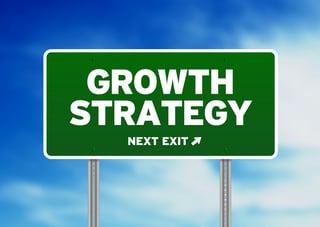Growth Insights for CEOs

5 AI Trends Every CEO Must Act On
Earlier this year, I shared takeaways from Mary Meeker’s Internet Trends Report, which showed how AI is reshaping business at a macro level. Building on that, Google Cloud’s 2025 AI Trends highlights five forces that will directly impact companies in the year ahead.
AI is no longer experimental. It is restructuring markets, reshaping customer expectations, and redrawing competitive boundaries. Here are five AI trends CEOs are preparing for now:
Recent Posts

Standing in the Middle of the Road
Thu, Sep 22, 2016 — In this VLOG, Deborah takes a perspective from Margaret Thatcher, former Prime Minister of Great Britain who understood that a middle of the road or half a position was no position at all. As a CEO, being clear on what you stand for, what your position is on important matters and the direction your company should be heading in, is critical to avoiding the kind of decision paralysis that can limit the potential of your business and your team. Check it out!

The CEO's Challenge of Staying Relevant in an Accelerated World
Mon, Sep 19, 2016 — And what to do about it Almost all CEOs face the challenge of maintaining relevancy in the markets they serve. More specifically, what keeps many CEO’s awake at night is the realization that something is materially changing in their company, in their markets, or within what was once a marquee product line. Yet, the rank and file just can’t see it. And if they do see it, they aren’t responding fast enough. Maybe our CEO can’t fully understand it. But their instincts tell them that it’s more than a seasonal blip; it’s something systemic that could rock the company off its foundation. In many instances, the problem boils down to the company not innovating fast enough. The world is seemingly passing it by. Relevancy is lost.

Forging a Solid Go to Market Plan – Without the Assumptions
Wed, Sep 14, 2016 — Business owners and entrepreneurs live in a constant state of observation. Equal parts tenacious and curious, they never stop watching, listening, and comparing their product and service offerings to the competition. They ask themselves daily, hourly: “Is the competitor’s product better?” and “Am I really putting an impactful marketing message out there?”-- often secretly wondering if they truly know the answer.
Stay up-to-date with the latest from Chief Outsiders

Culture Eats Strategy for Breakfast: Has Your Company Failed to Order the Breakfast of Champions?
Tue, Sep 13, 2016 — You are a hard-working, dedicated CEO who wants to grow your company – so you have taken the necessary steps to understand your market and develop insights about growth opportunities. You have even transformed those insights into a cohesive strategy, and worked with your team on a successful execution plan. What’s more, you have metrics and milestones galore. Congratulations! You’re ready to grow! …Right?

Enabling the Sale: How to Handle Requests for Customer References Without Losing Momentum
Thu, Sep 8, 2016 — Sales and marketing in the B2B space is ever-evolving, often disrupted with new technologies or strategies that revolutionize traditional processes. Sales enablement is a relatively new concept in the B2B sales industry, one that refers to the utilization of training, tools, metrics and marketing alignment to maximize a deal’s potential and close it faster, no matter the product or service.

CEOs: What’s the Value of a Strategic Plan?
Wed, Sep 7, 2016 — A jargon-free discussion Did you know that, mathematically, if you improve revenue by 2% per month, you will more than double your business in 3 years? The value of a strategic plan then, is to create the “how to” strategies, initiatives and resourcing to get there. Whoa…so how do you get this done?

Strategic Plans Gone Bad
Mon, Aug 8, 2016 — No Middle Ground Strategic planning seems to have no middle ground: it’s either an exercise that teams often dread, or an indispensable guide for inspiration, direction and accountability. Margaret Thatcher gives her view of “the middle” in her famous quote “standing in the middle of the road is dangerous, it gets you knocked down on both sides.” As polarizing of a figure she was, and as heated the debate over her legacy is, history will give the “iron lady” credit for making decisions and ensuring actions.

Thinking Smarter about Machine Learning: A Conversation with Geoff Roach
Sun, Jul 31, 2016 — Artificial intelligence, or machine learning, is on the rise. From Siri to self-driving cars, new frameworks are becoming accessible to the mainstream, and products are growing increasingly "smarter." As massive quantitates of data are being plugged into predictive systems, this leads to a question of quality: How can we ensure the programs we put in place will understand the data we throw at them? Geoff Roach with Chief Outsiders argues that no matter how smart our machines become, humans will always need to be one step ahead.

Driving Marketing Post M&A
Tue, Jul 26, 2016 — M&A continues to be a preferred growth strategy for many executives according to KPMG’s 10th Annual Study of the M&A Outlook. The key trends driving M&A activity vary by industry sector but the primary challenge is consistent across the board - valuation disparity between the buyer and seller.[i] As a result, most of the effort is on financial evaluations during due diligence, and other areas, like human resources, can be postponed or overlooked.
.png?width=1500&height=398&name=CO_Corporate%20Logo%202021_4C_HOR_FNL-1%20(1).png)